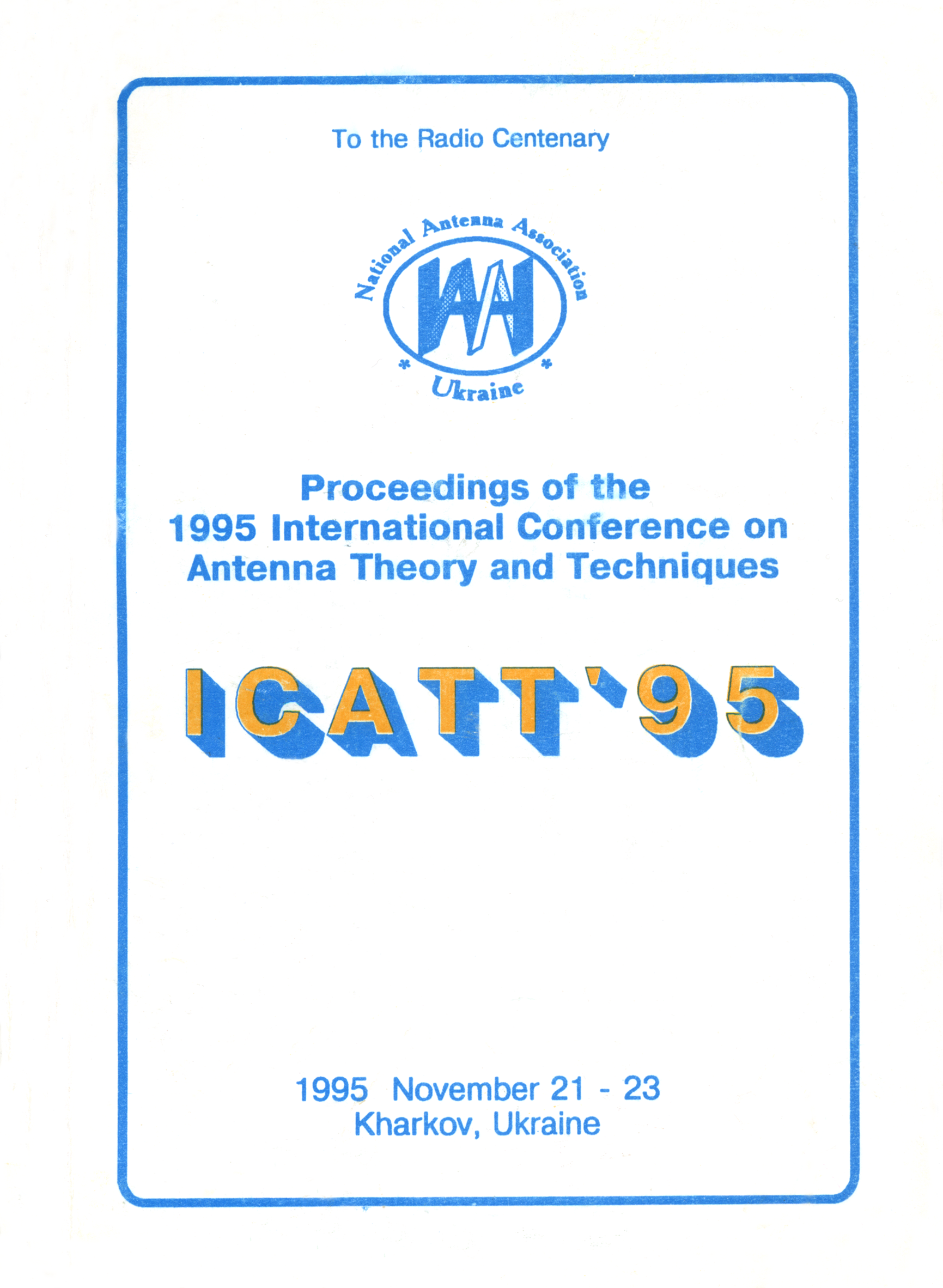Angular waveguide elements as mode convertors
DOI:
https://doi.org/10.1109/ICATT.1995.1234170Abstract
The traditional high mode exciters are rather complicated waveguide units, the topology of which most often depends on the type of excited mode. It was found that in many cases very simple angular elements may be used as such exciters providing the conversion from the H10 mode to the Hq0 one (2<q<20) at a level of 80-100%. Moreover, the same geometry can provide the modes of different numbers q at the output port when the excitation frequency is varied that opens new areas of its application, for example, in metrology.
Physically, the operation mechanism of such exciters consists in coincidence of propagation directions of Brillouin’s components of incident and transmitted modes As a result, the field distribution is formed at the output aperture that is close to the distribution of the latter propagating mode. The high mode power may reach a level of about 70% of the incident H10 mode power if a simple nonsymmetrical H-plane angled bend is used. The application of truncated non-symmetric bends and optimization of their geometry allows to raise the level of conversion practically up to 100%, if 2<q<5. Search for such a geometry is possible by using efficient numerical models of elementary angular discontinuities based on the semi-inversion method and by subsequent optimization both of separate parts and convertor as a whole.
The Hq0 mode convertors have been realized for q = 2, 3, 4, 8, 17 in centimeter and millimeter waveltngth range devices that are used as elements of antenna systems, power dividers and combiners, and microwave heating systems, where it is necessary to have a homogenous field distribution over a specimen surface. In the latter case the H10 → H80 and H10 → H17,0 mode convertors are suitable.
In the elaboration of power dividers on q channels, it has been solved incidentally the problem of a separation of channels with transitions to the output waveguides of standard cross-section. The corresponding numerical model was built by the decomposition technique with using the S-matrices of the following key elements: non-symmetric angled bends, linear tapers, waveguide bifucations. Computations of the latter have been made based on a moment-method algorithm that takes into account the field singularity at the edges.

